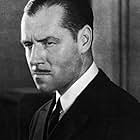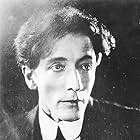Fenella, a poor Italian girl, falls in love with a Spanish nobleman, but their affair triggers a revolution and national catastrophe.Fenella, a poor Italian girl, falls in love with a Spanish nobleman, but their affair triggers a revolution and national catastrophe.Fenella, a poor Italian girl, falls in love with a Spanish nobleman, but their affair triggers a revolution and national catastrophe.
Anna Pavlova
- Fenella
- (as Mlle. Anna Pavlova)
Rupert Julian
- Masaniello
- (as Mr. Rupert Julian)
Laura Oakley
- Rilla
- (as Miss Laura Oakley)
William Wolbert
- Pietro
- (as Mr. William Wolbert)
Betty Schade
- The Duchess
- (as Miss Betty Schade)
Wadsworth Harris
- The Duke
- (as Mr. Wadsworth Harris)
Jack Hoxie
- Perrone
- (as Mr. Hart. Hoxie)
Edna Maison
- Princess Elvira
- (as Miss Edna Maison)
Jack Holt
- Conde, the Viceory's Second Son
- (as Mr. John Holt)
Lina Basquette
- Child
- (uncredited)
Nigel De Brulier
- Father Francisco
- (uncredited)
Storyline
Did you know
- TriviaConsidered to be the first American "epic" directed by a woman.
- GoofsParts of the castle grounds were shot at a turn-of-the-century home in Los Angeles, which is obvious in shots that reveal modern double-hung windows.
- Quotes
Title Card: At the time our story opens, Fenella, in spite of the fact that she could not speak, was the lightest-hearted slip of thistledown girlhood in the world.
- ConnectionsFeatured in That's Dancing! (1985)
Featured review
This silent epic should be much better known than it is. It is based on the plot of an opera of the same name, describing a real revolt in Naples in the 17th century. The title character, Fenella, is the fictional mute sister of Masaniello, one of the key historical figures in that revolt. Fenella is played by ballerina Anna Pavlova, in her only full-length film. Unfortunately, Pavlova's broad acting style is better suited to ballet or opera, playing to the crowds in the back, rather than to the more intimate medium of film. On the other hand, she was one of the most famous dancers of her day, and this film is one of the very few records left to modern audiences to see her in motion.
Despite her top billing, the film does not hinge on Pavlova, and for the most part, this is really a beautifully made film. This was a Big-Budget picture when it was made -- the ornate costumes and sets are stunning. The scenes of the revolt are chaotic, real, and compelling.
Some of the actors, including Pavlova, as well as a few of the supporting roles, are guilty of the sort of overly theatrical acting associated with early movies. For the most part however, the acting is natural. I was particularly impressed by Douglas Gerrard, playing a nobleman who seduces and abandons Fenella in favour of his aristocrat fiancée.
Surprisingly, the film also works as a "silent musical". The early part of the movie includes a number of dance numbers showing a variety of styles, and not just those featuring the film's "star", Anna Pavlova. I would recommend this film for all of its parts.
Despite her top billing, the film does not hinge on Pavlova, and for the most part, this is really a beautifully made film. This was a Big-Budget picture when it was made -- the ornate costumes and sets are stunning. The scenes of the revolt are chaotic, real, and compelling.
Some of the actors, including Pavlova, as well as a few of the supporting roles, are guilty of the sort of overly theatrical acting associated with early movies. For the most part however, the acting is natural. I was particularly impressed by Douglas Gerrard, playing a nobleman who seduces and abandons Fenella in favour of his aristocrat fiancée.
Surprisingly, the film also works as a "silent musical". The early part of the movie includes a number of dance numbers showing a variety of styles, and not just those featuring the film's "star", Anna Pavlova. I would recommend this film for all of its parts.
Details
- Release date
- Country of origin
- Languages
- Also known as
- Немая девушка из Портичи
- Filming locations
- Museum of Science & Industry - 57th & Lake Shore Drive, Jackson Park, Hyde Park, Chicago, Illinois, USA(then the Field Columbian Museum)
- Production company
- See more company credits at IMDbPro
- Runtime1 hour 52 minutes
- Color
- Sound mix
- Aspect ratio
- 1.33 : 1
Contribute to this page
Suggest an edit or add missing content

Top Gap
By what name was The Dumb Girl of Portici (1916) officially released in Canada in English?
Answer

































